Introduction
We bought a Steam Deck, and so what better to do with a Steam Deck than to immediately review it and find out how it performs! Here at TheFPSReview we are all about that performance and gaming experience. The Steam Deck is Valve Corporation’s handheld gaming device (that also can double as a Linux-powered desktop computer).
This isn’t what you would consider a traditional console system by any means, it uses PC components, and is backed by Valve, Linux, and Steam for a PC gaming experience, but in your hand. Never before have this configuration come together to provide this type of experience. The Steam Deck has a lot to prove, so let’s see if it can come through.
After a number of months in the rumor category, the Steam Deck was announced in July of 2021. Several delays due to the COVID pandemic supply issues saw the first models reach folks on or about the 28th of February 2022. In fact, a few models were hand delivered by CEO Gabe Newell himself.
Valve dealt with the pandemic supply chain issues in a rather unique fashion, offering the purchase of the Steam Deck through Steam, their online store (known primarily as a PC video game store and gaming ecosystem). A buyer had to first be registered with Steam and then put a 5-dollar deposit down on the model they wished. Only one Deck could be purchased per registered account. Once this was done, the buyer was placed in a queue.
The Steam Deck being reviewed today is a retail 256GB NVMe SSD version that arrived 1 year and 3 days after it was ordered. The Steam Deck is currently offered in three varieties, differing primarily by the amount of storage available on board the handheld. 64GB models sell for $399, 256GB for $529 and the 512GB for $649. The 512GB model also sports an “exclusive carrying case and Premium anti-glare etched glass” on the screen. Also, a Docking station has been advertised but is not yet available.
Steam Deck Specifications
The Steam Deck is a ready-built complete system. You can view the complete tech specs here.
| 64GB eMMC | 256GB NVMe SSD | 512GB NVMe SSD | |
|---|---|---|---|
| CPU | Zen 2 4c/8t (3.5GHz) | Zen 2 4c/8t (3.5GHz) | Zen 2 4c/8t (3.5GHz) |
| GPU | RDNA2 (8 CUs) (1.6GHz) | RDNA2 (8 CUs) (1.6GHz) | RDNA2 (8 CUs) (1.6GHz) |
| RAM | 16GB LPDDR5 (5500 MT/s) | 16GB LPDDR5 (5500 MT/s) | 16GB LPDDR5 (5500 MT/s) |
| Storage | 64GB eMMC (PCIe Gen 2 x1) | 256GB NVMe (PCIe Gen 3 x4 or PCIe Gen 3 x2) | 512GB NVMe (PCIe Gen 3 x4 or PCIe Gen 3 x2) |
| Display Type / Size | IPS LCD / 7″ | IPS LCD / 7″ | IPS LCD / 7″ |
| Resolution | 1280×800 | 1280×800 | 1280×800 |
| Wi-Fi | 2.4GHz and 5GHz / 802.11a/b/g/n/ac | 2.4GHz and 5GHz / 802.11a/b/g/n/ac | 2.4GHz and 5GHz / 802.11a/b/g/n/ac |
| Bluetooth | Bluetooth 5.0 | Bluetooth 5.0 | Bluetooth 5.0 |
| microSD | SD, SDXC and SDHC | SD, SDXC and SDHC | SD, SDXC and SDHC |
| Size / Weight | 298mm x 117mm x 49mm / 669 grams | 298mm x 117mm x 49mm / 669 grams | 298mm x 117mm x 49mm / 669 grams |
| Software / Desktop | SteamOS 3.0 (Arch-based) / KDE Plasma | SteamOS 3.0 (Arch-based) / KDE Plasma | SteamOS 3.0 (Arch-based) / KDE Plasma |
| Battery | 40Whr battery | 40Whr battery | 40Whr battery |
| APU TDP | 4-15W | 4-15W | 4-15W |
| Pricing | $399 | $529 | $649 |
The CPU and graphics combo is a custom 7nm AMD APU based on Zen 2 CPU cores and RDNA2 graphics cores. Codenamed Van Gogh, this APU consists of a Zen 2 architecture CPU with 4-cores and 8-threads (4c/8t). The CPU cores can run between 2.4GHz and 3.5GHz, with 3.5GHz being its maximum boost clock. The GPU component is based on AMD’s RDNA2 architecture. It is an 8 CU (Compute Unit) design that can run between 1GHz to 1.6GHz, with 1.6GHz being its maximum boost clock. The APU TDP ranges from 4-15W maximum, so at 15W TDP we are looking at what might be a thin and light laptop’s power level.
RAM consists of 16GB of LPDDR5 operating at 5500 MT/s dual-channel. This should be more than sufficient for handheld gaming. All of this is powered by a 40Whr battery, where Valve claims 2-8 hours of gameplay. Charging is achieved by a 45W USB Type-C power supply with an included charger.
On-board storage is where the models differ, and where mostly the difference in pricing comes in. On the low-end is the 64GB model, which is achieved with a slower eMMC module at PCIe Gen 2 x1 speeds. Next up the chain is the 256GB model which uses a 2230-sized NVMe SSD at either PCIe Gen 3 x4 or PCIe Gen 3 x2. Apparently, some models were shipped with a PCIe Gen 3 x4 SSD and some with a PCIe Gen 3 x2 SSD, though Valuve claims it did not see any impact on gaming performance between x2 and x4. Finally, at the high-end is the 512GB NVMe SSD model, which also has the same issue of different speed SSDs installed.
There is room for storage expansion by the way of micro-SD chips. The Steam Deck supports UHS-I to include SD, SDXC, and SDHC. Our unit has a 256GB micro-SD installed. The Deck can accept micro-SD cards up to 1TB in size. Connection is by Wi-Fi, however, the Steam Dock will have hard wire connectivity. The Steam Deck supports Bluetooth 5.0.
Steam Deck Pictures

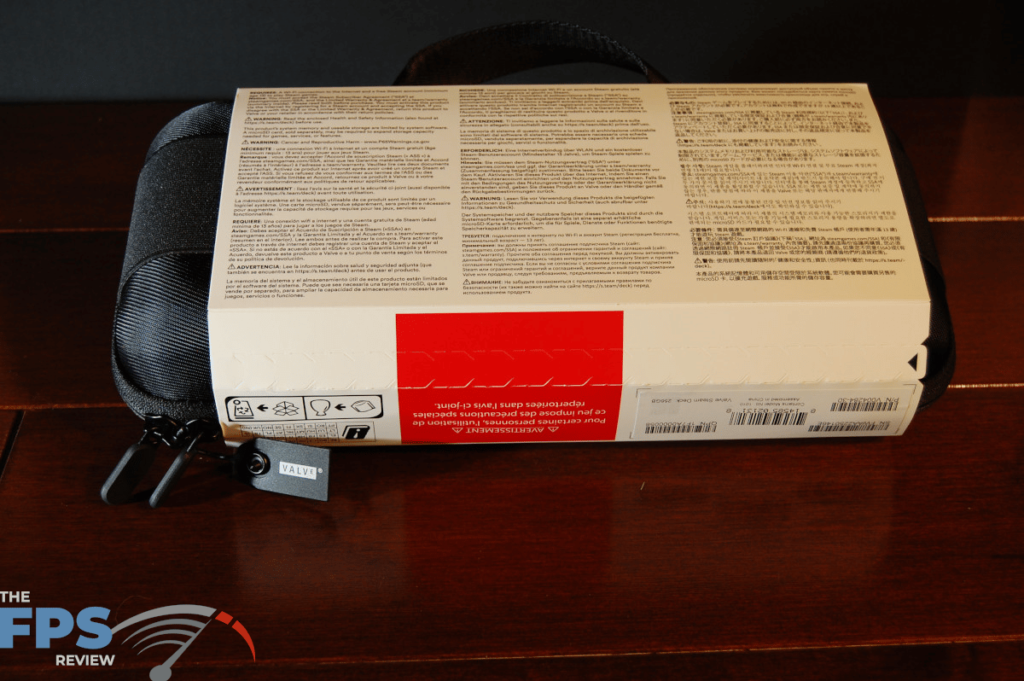
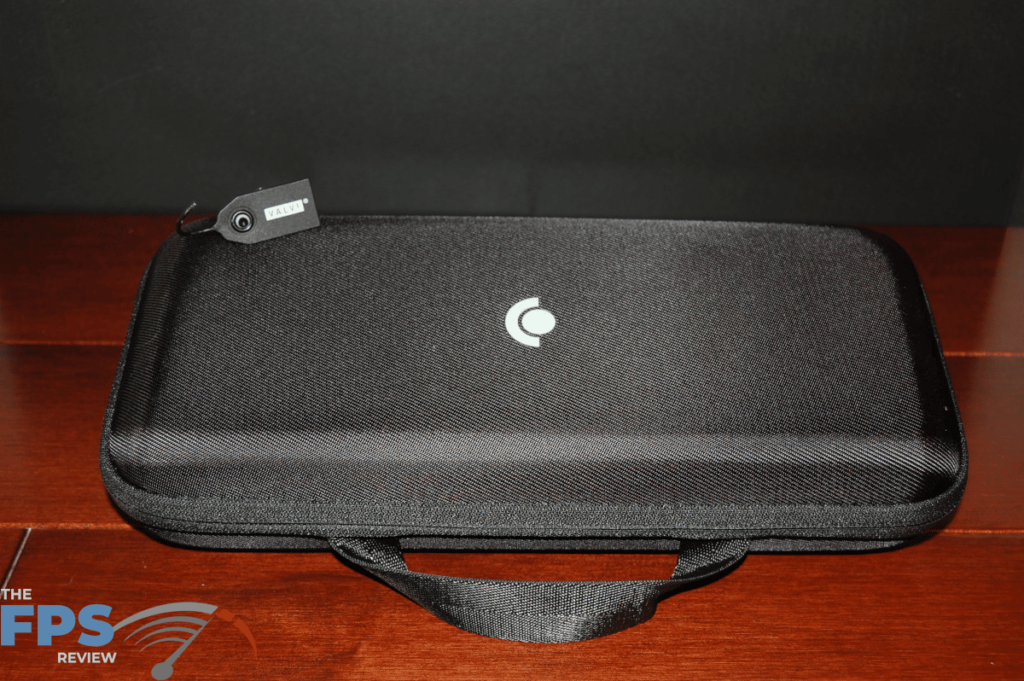
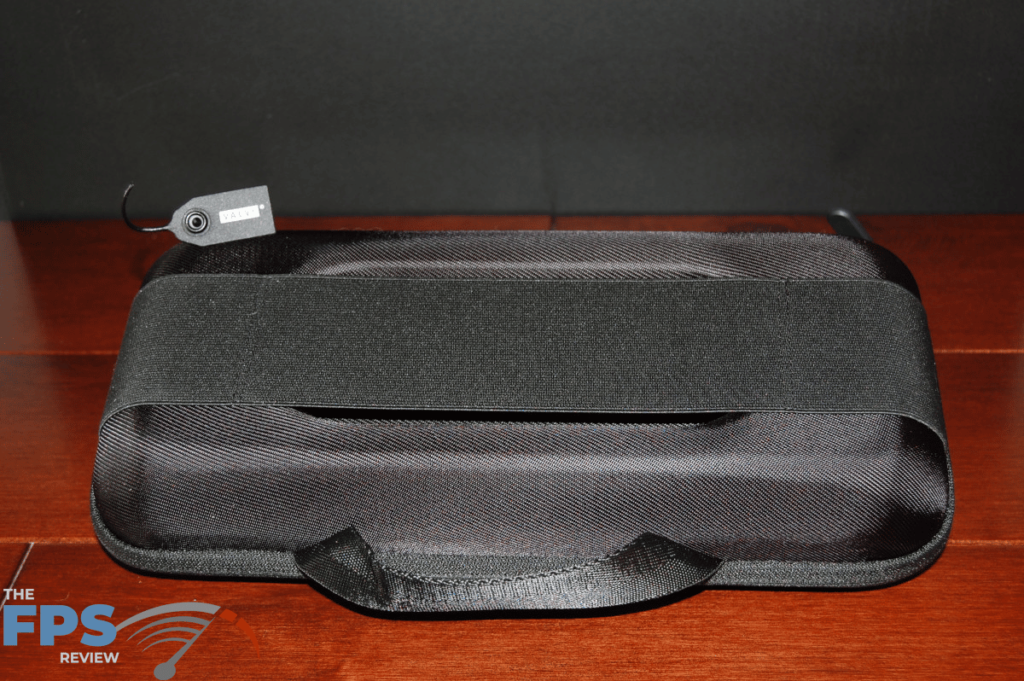
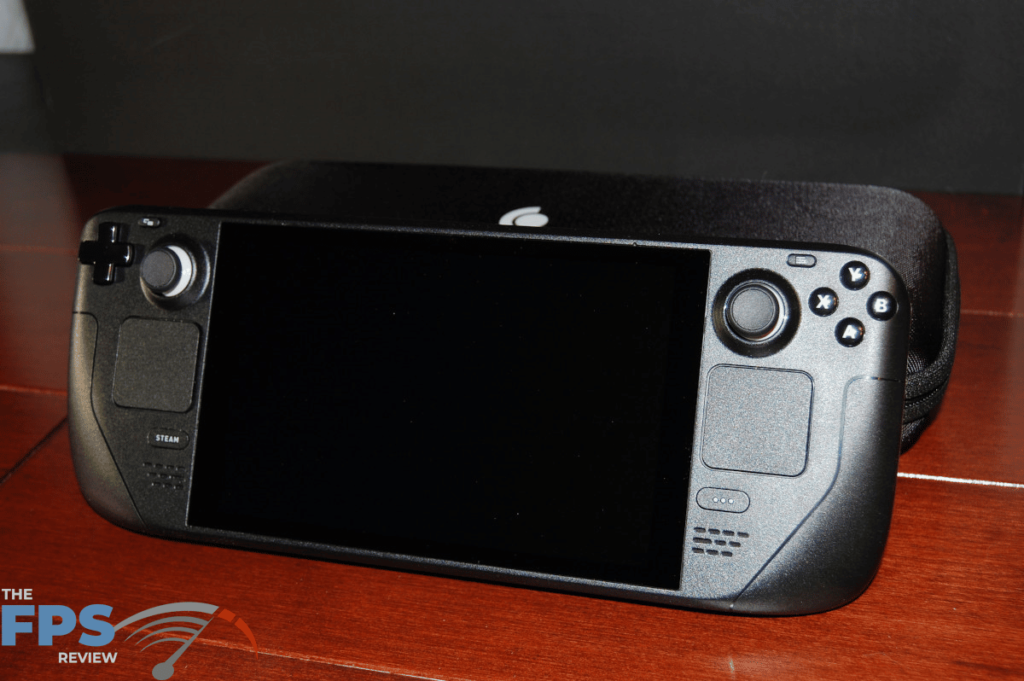
The Steam Deck has a 7-inch (diagonal) IPS LCD touch-enabled screen set at 1280×800 resolution natively. There are a multitude of control buttons, D-pads, analog joysticks, trackpads, and 4 “triggers” on each side top, and bottom. Audio is from two front-facing speakers.
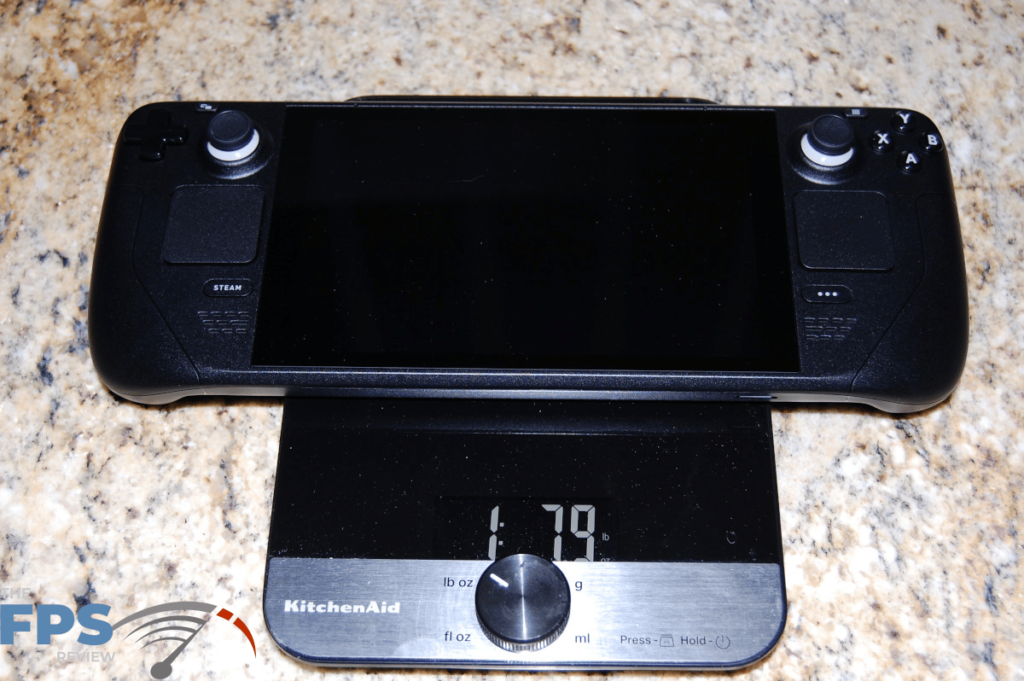
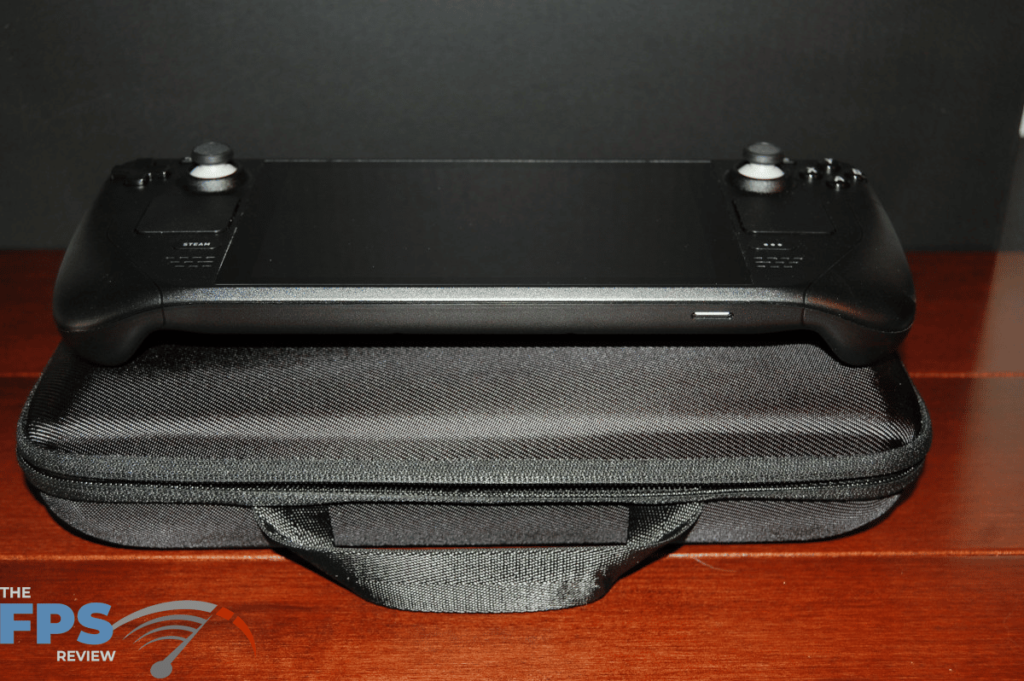
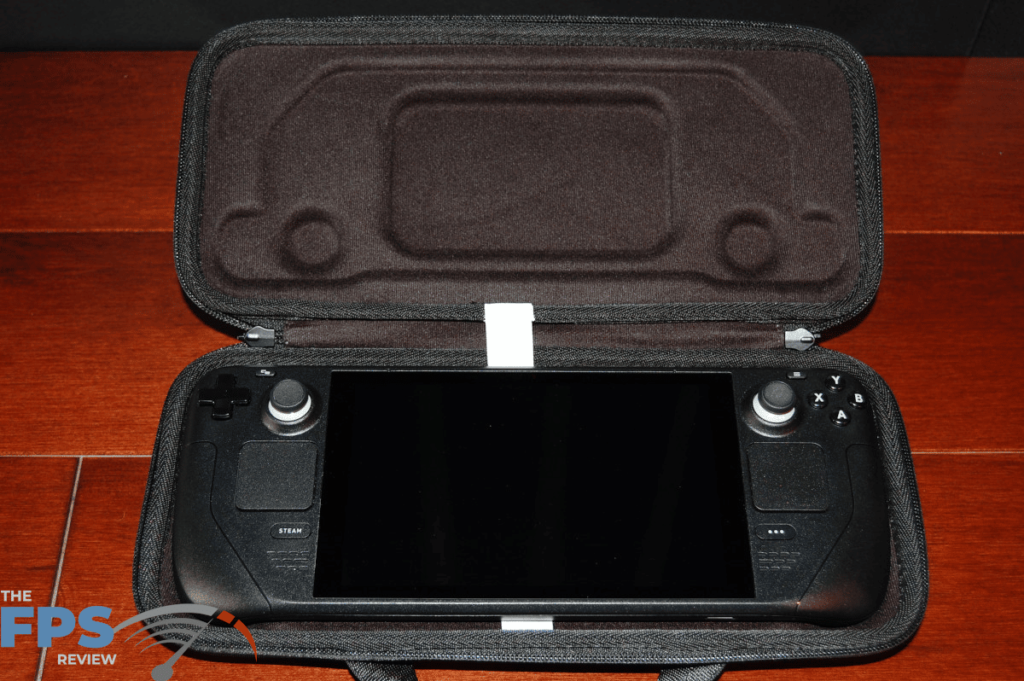
The device weighs in at 23 ounces. It is 11 ½ inches by 4 1/2 inches and 1 ¾ inches thick at the grips positioned on the edges. This device is big. It is hefty to hold, in a good way. The controls are laid out to accommodate the hands very nicely. None of the controls or buttons are hard to reach.

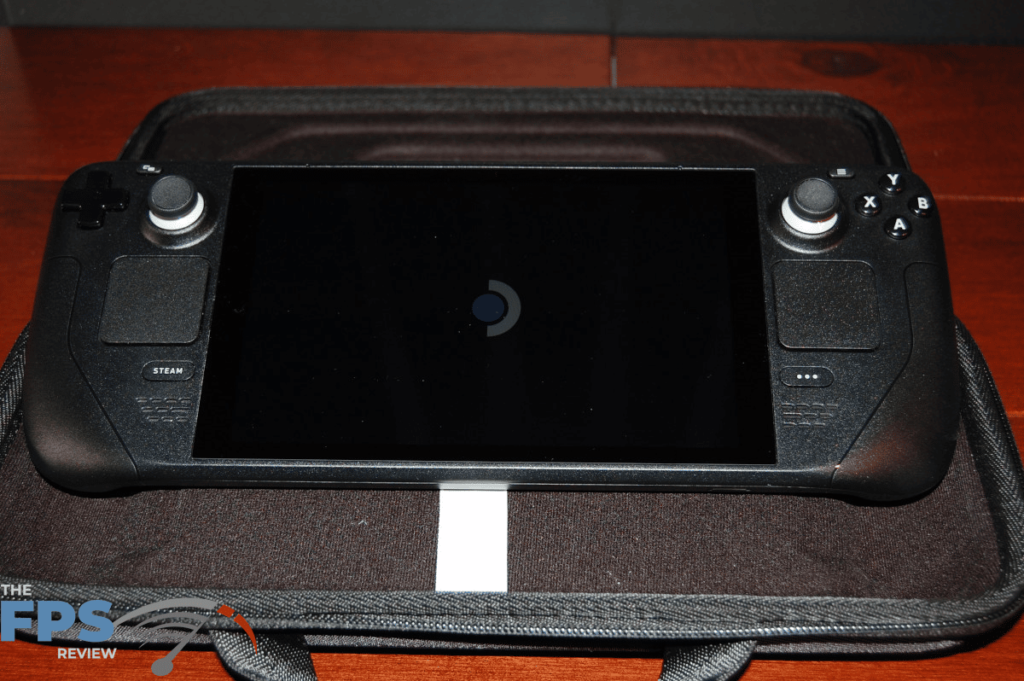
The only modification needed is the addition of storage space by way of a micro-SD card of your choice.

